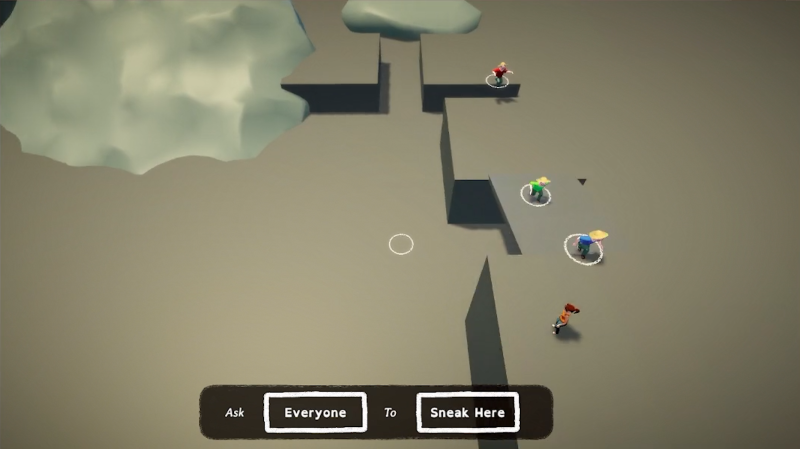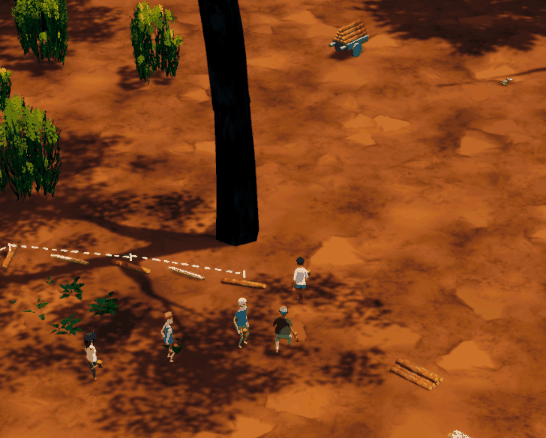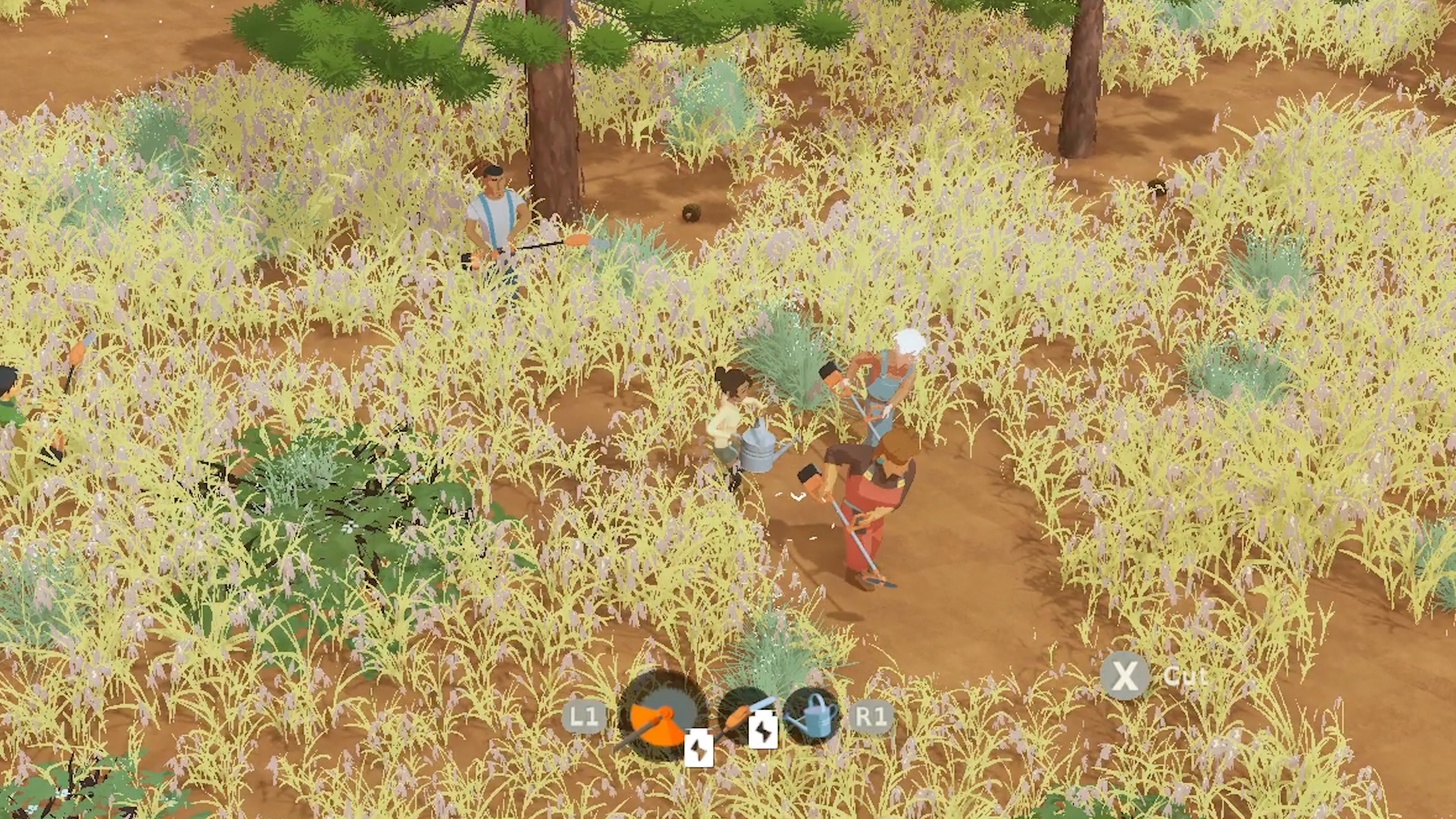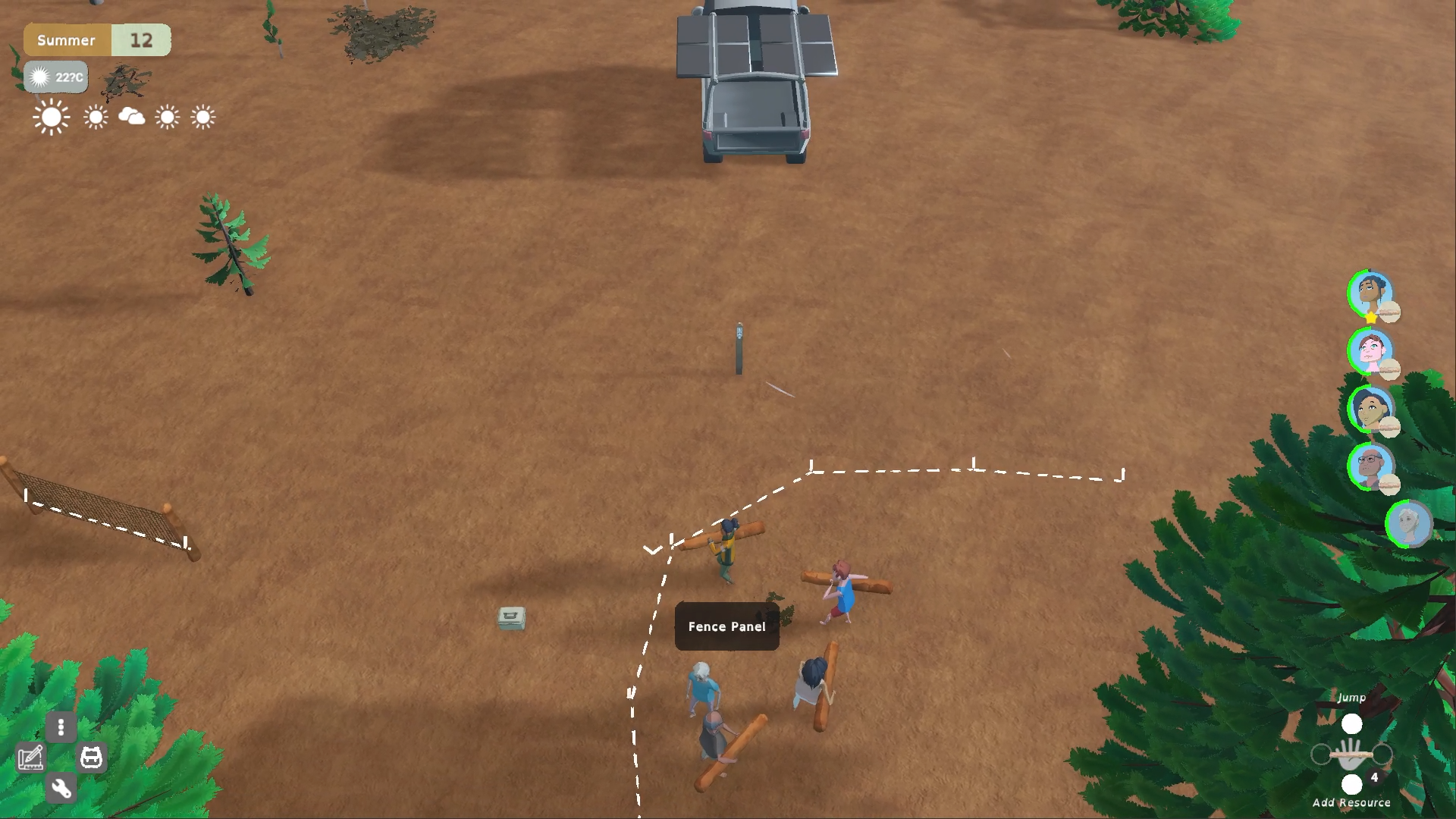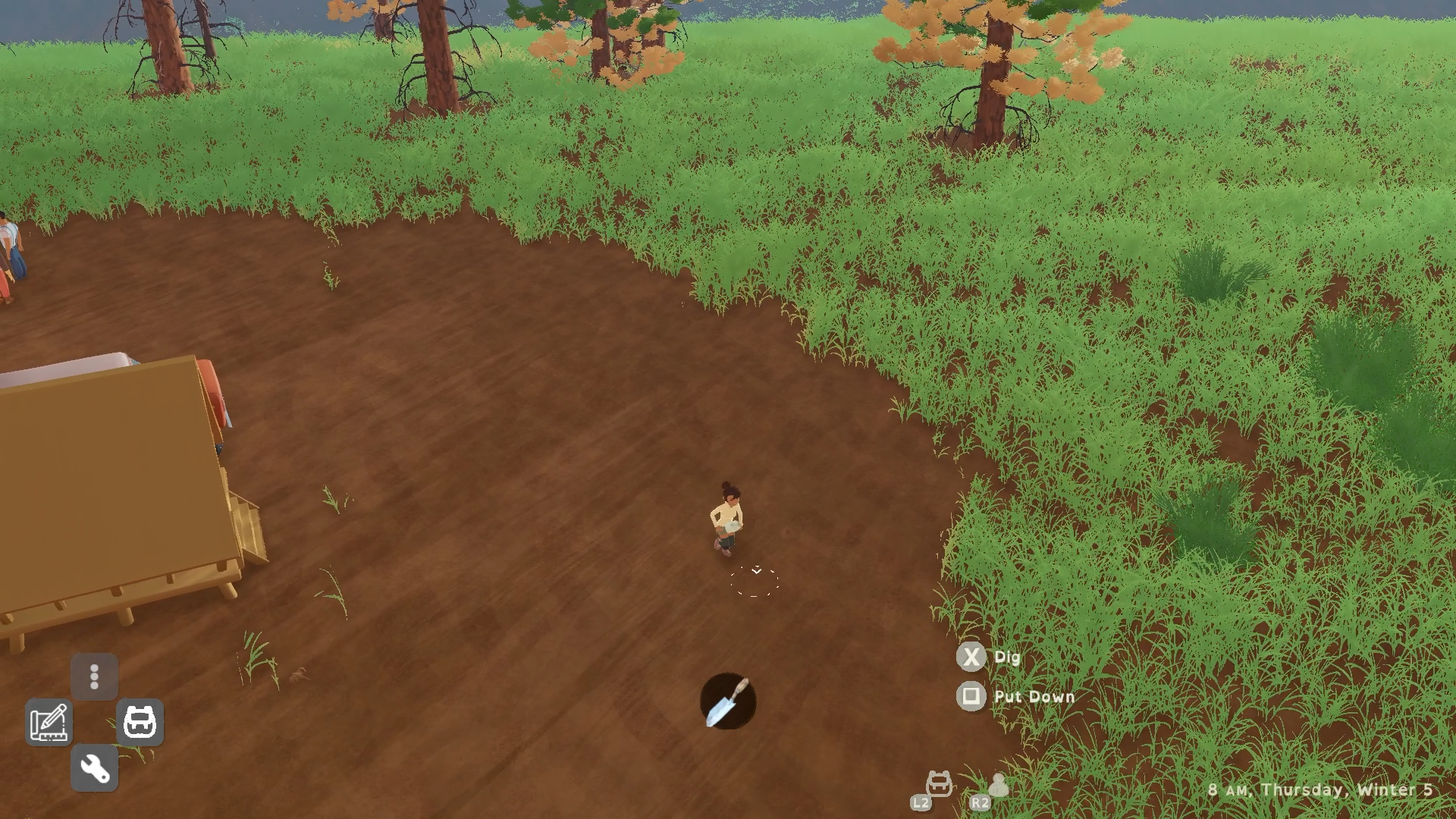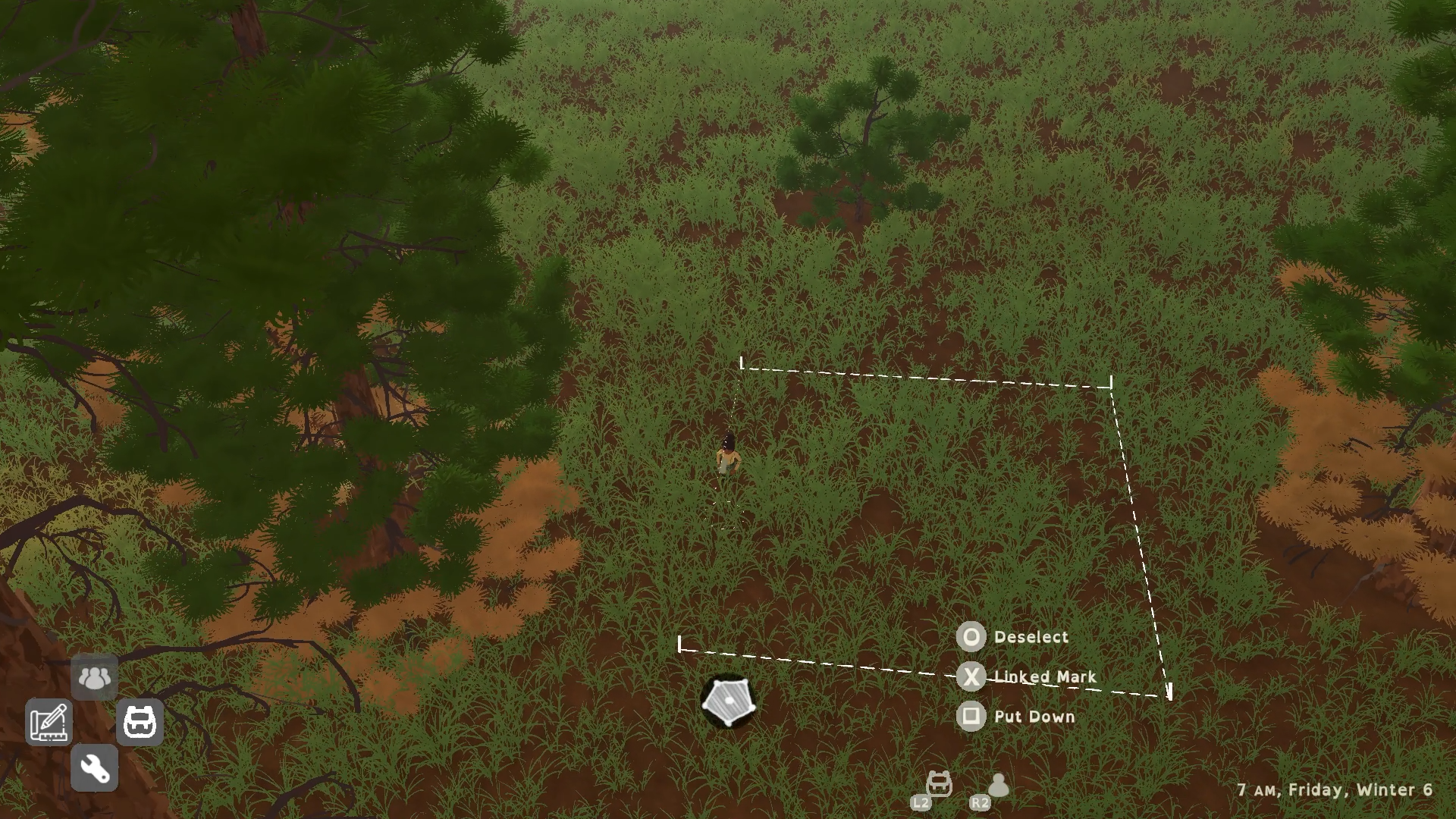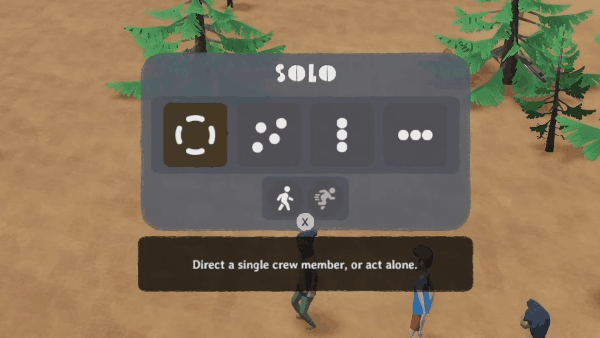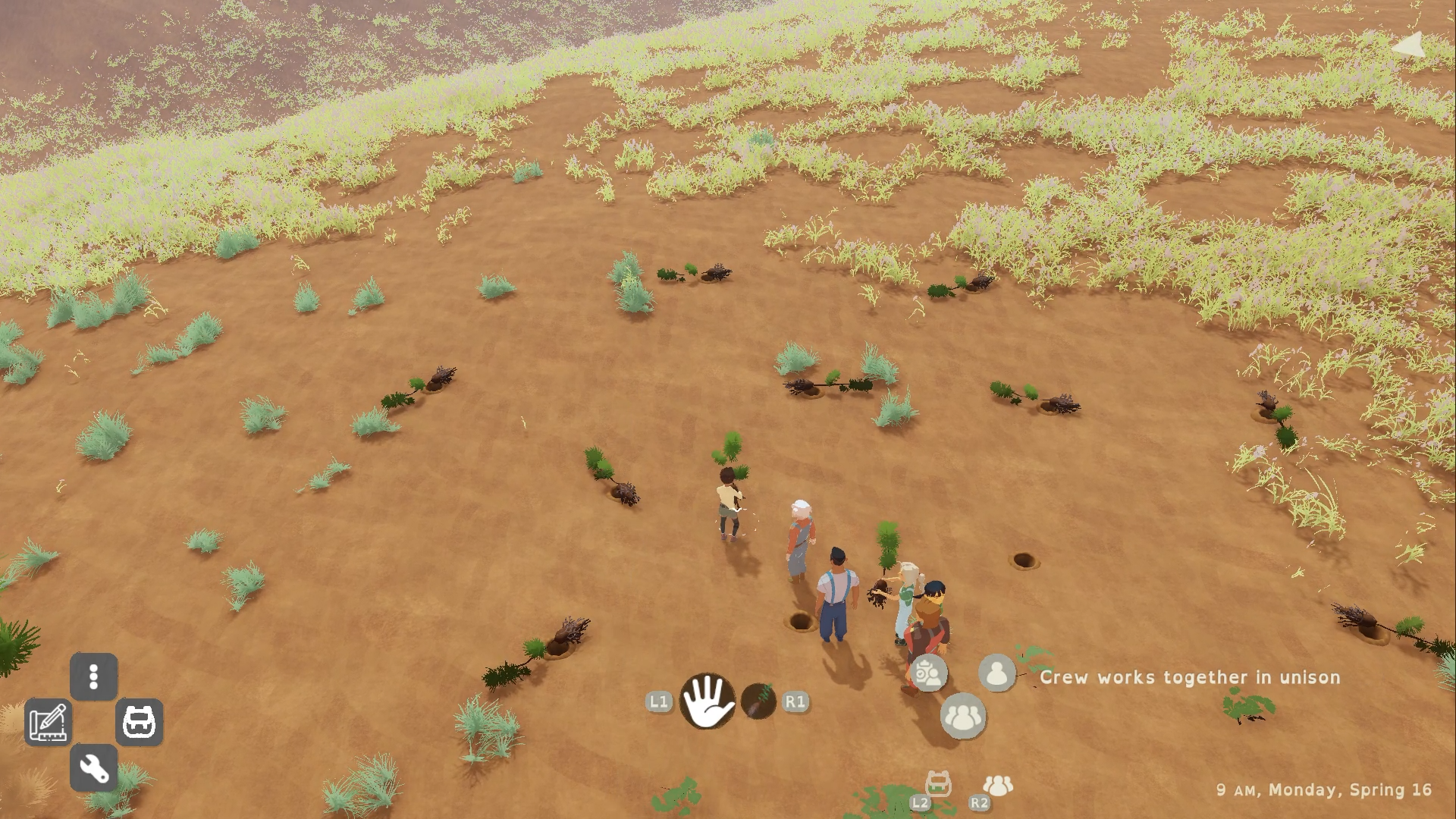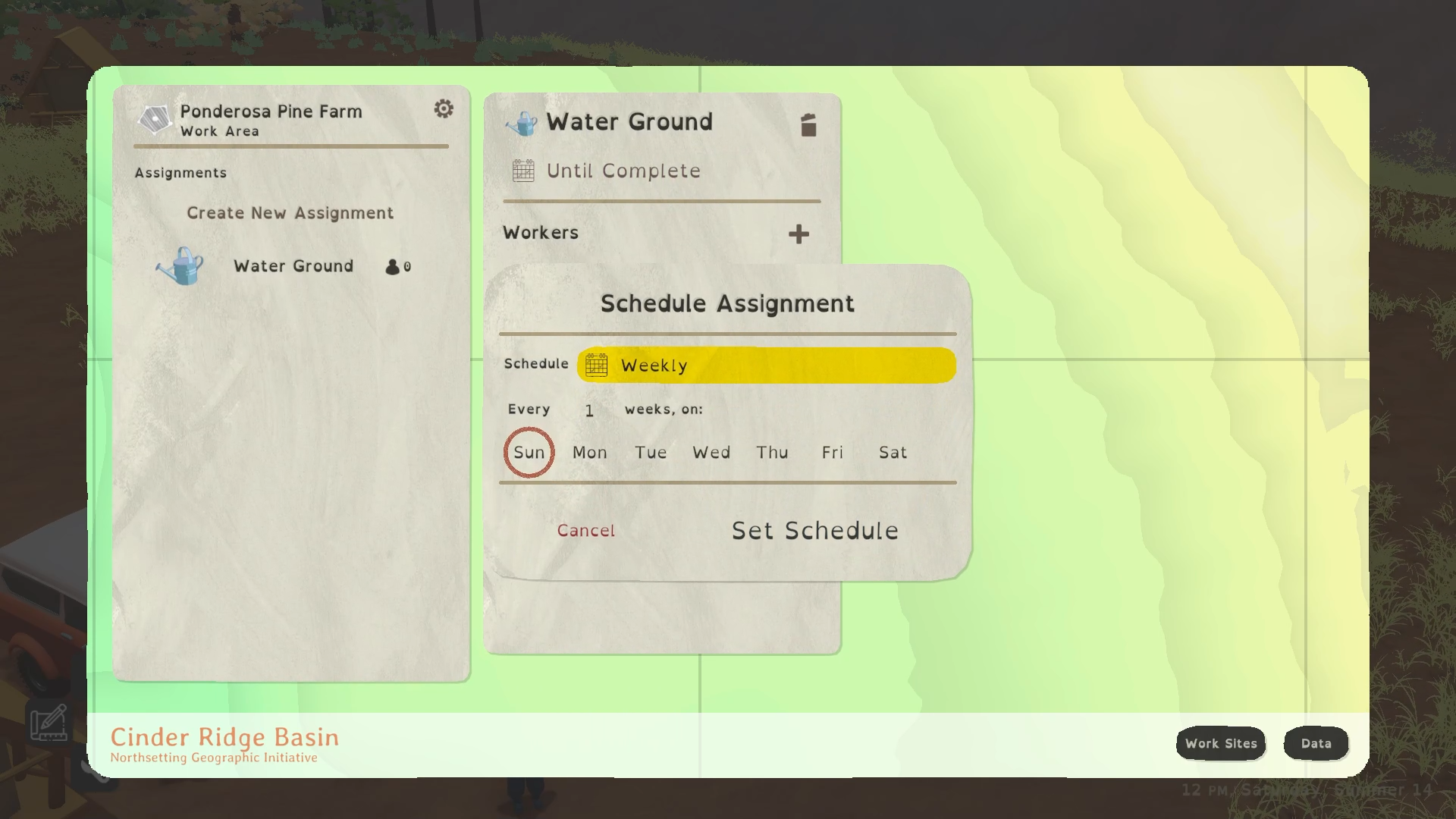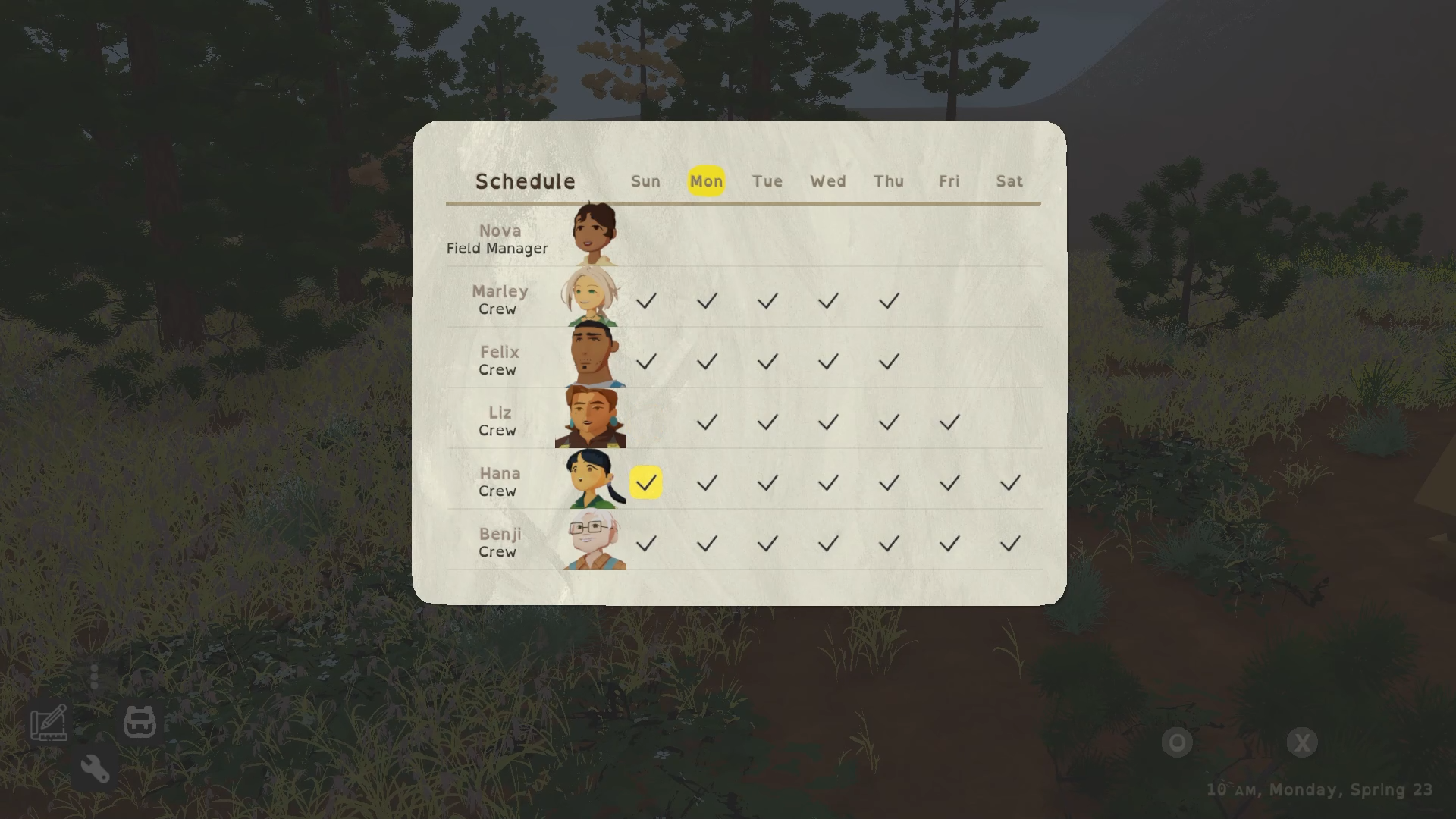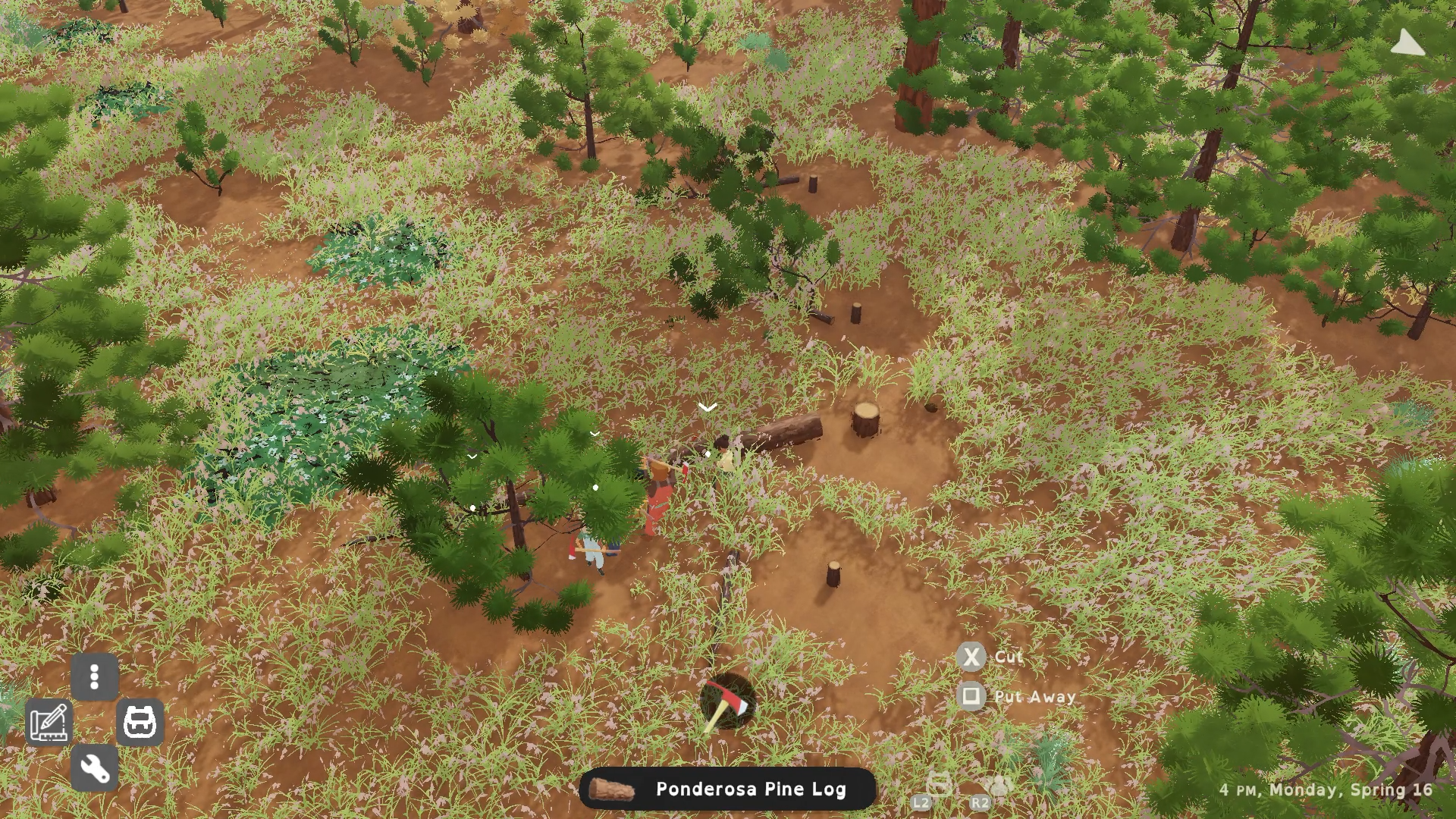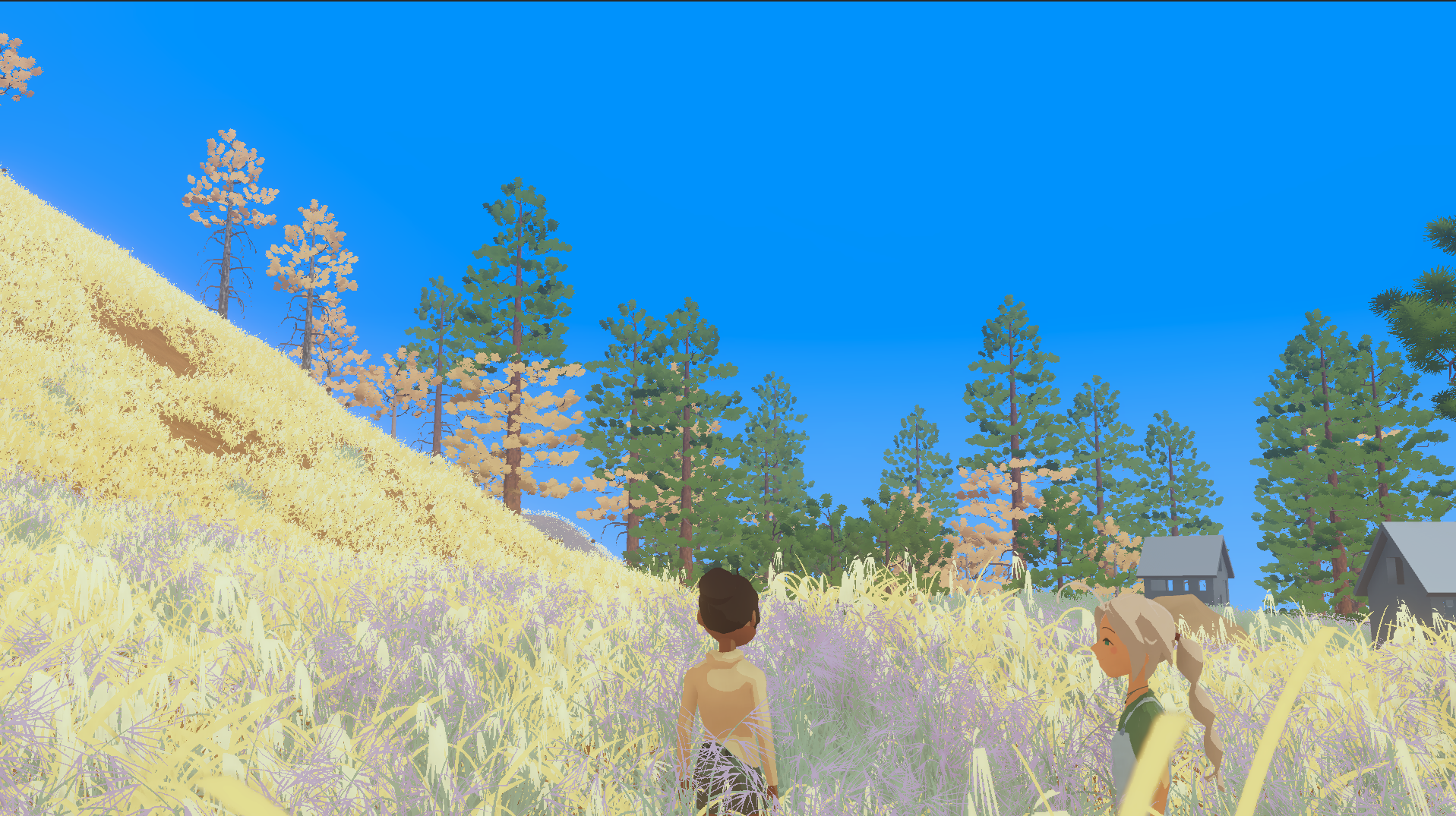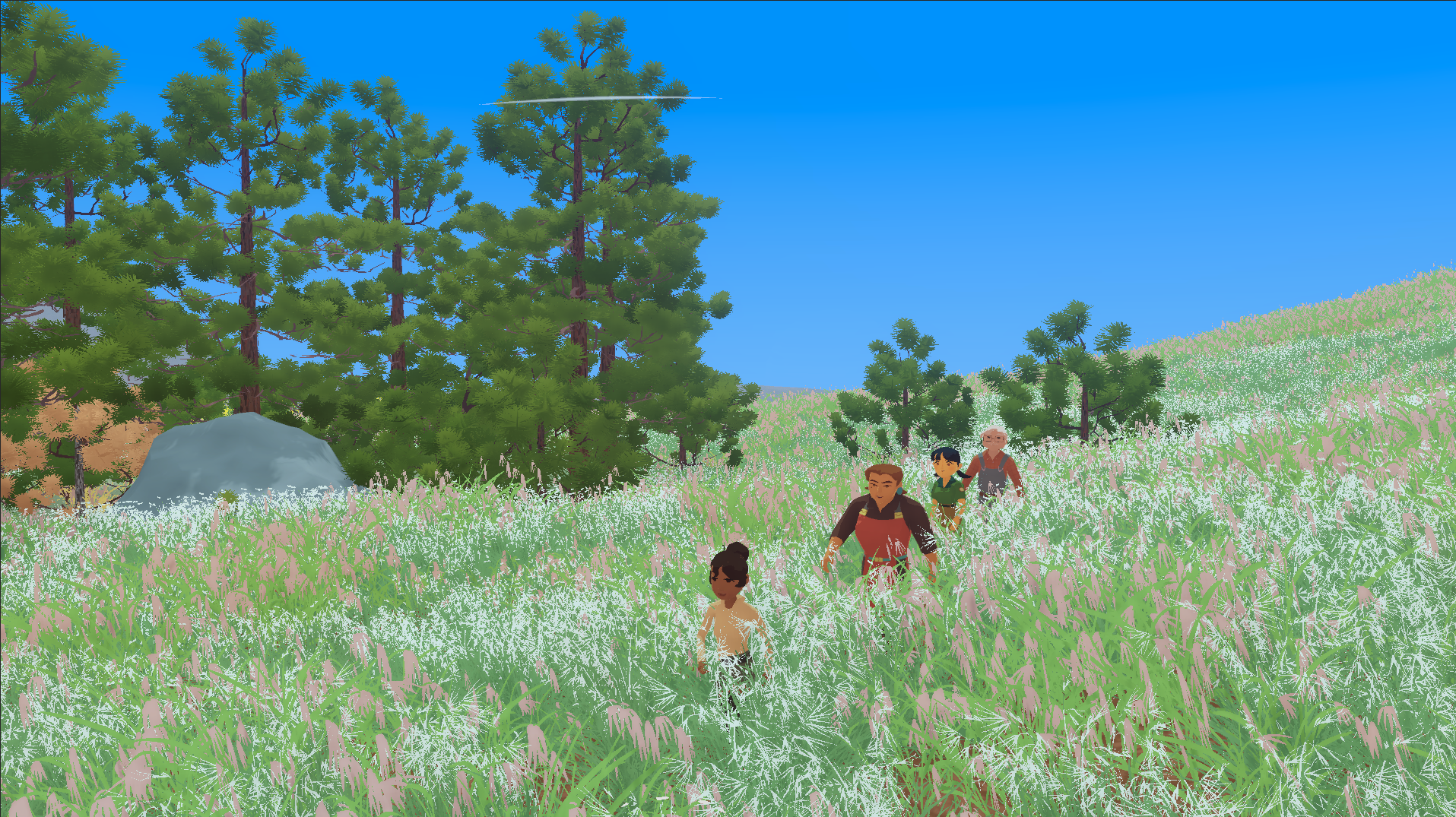


Case Study
Designing Intuitive Crew Control
for Cinder Ridge
Role:
Lead Designer/Developer
Team:
3 Engineers, 1 Designer, 1 Concept Artist
Platform:
Game for PC and Console
Designing crew control that feels like leadership and teamwork, not micromanagement
Cinder Ridge is a game about forestry in the future, where players lead a small crew to restore and maintain a forest.
Players plant trees, clear brush, build trails, and manage the health of the forest ecosystem.
To emphasize themes around teamwork and leadership, we wanted the player character to both manage and participate in the work being done - all through an intuitive controller interface.
Through iterative testing, the design coalesced around a basic insight: the metaphor of "directing the crew" should support player goals, not get in the way.
Players cared about what gets done, not who does it
Players need to switch seamlessly between precise action and efficient large-scale work
Crew behavior must be intuitive and predictable
The final system seamlessly blends direct control with strategic delegation, letting players fluidly shift from hands-on work to team coordination.



Prototyping
How Should Crew Control Work?
Single-file movement works because it leverages familiar real-world behavior
The game features rugged terrain with light platforming. Single-file movement felt natural—people instinctively form lines when navigating challenging terrain together.
Players care more about what gets done
than who does it
This interface modeled English sentences: "Ask [person] to [perform action] at [location].” Testing showed that character selection added friction without benefit. Players focused on the work itself, not on which crew member should do it.
Players want to lead coordinated action,
not just delegate it
Players could group crew members and line them up to "sweep" areas in unison, scaring wildlife out of the brush. The line-up mode had immediate appeal, but indirect control felt awkward. Players wanted to lead coordinated movements themselves.
Smart selection enables seamless switching between precision and efficient mass edits
For complex tasks like building infrastructure, crew members copy the player's actions on nearby targets. This let the player participate directly while scaling up work with more crew. Smart, contextual selection made big jobs feel lively rather than tedious.



Action Selection
Who Does What?
Players choose tools,
not characters
Equipment provided an intuitive filter—each tool works on specific objects. Players tabbed through available tools using the bumpers.
Testing revealed two issues: assigning different tools to different crew members added needless complexity, and tabbing became cumbersome.
Equipment management shouldn’t get in the way of player goals
At first, each character had three inventory slots, plus one “in hand” slot. All items (tools, consumables, collectables) competed for this limited space.
I had assumed that limited per-character inventory would make recruiting additional crew feel meaningful—more people meant more carrying capacity—but players spent too much time managing inventory and equipping individual tools instead of doing the work they wanted to do.
Equipment defines who can do what
To address these friction points, we reconsidered equipment's role in the game. Equipment defines a character's role and abilities—it's fundamentally different from consumables or collectibles.
This insight led to separating tools from other items and implementing a more conventional equipment system that treats tools as a distinct category.
Separating inventory and equipment lets both systems serve their purpose
With tools moved to their own dedicated system, the general inventory can focus on its actual purpose: managing collectibles and consumables like seeds and cones.
The new interface provides a conventional grid layout with item details on hover/selection, making it easy to identify and use resources during work.
Tool selection should be instant
Holding R2/RT reveals a radial menu where tools can be selected with a flick of the right stick. One selection automatically coordinates the entire crew—no need to equip individuals or tab through multiple items.
A small inspector window shows which characters will equip the selected tool.
One thing at a time
The previous iteration allowed assigning different tools to different characters simultaneously, assuming this would enable complex multitasking.
Testing showed players rarely wanted to multitask this way. The new design simplifies tool selection to two choices: who's got what tools, and which tool or item is the party currently using.



Selection and Placement
Who Does What, Where?
Direct character control didn't
match player intent
At first, the player controlled their character's position directly with a conventional third person character controller. Selection and placement used a spherical trigger volume in front of the character.
Testing showed this was an indirect way to specify where actions should happen. Players cared about precise placement, not character position.
Direct cursor control for
precise placement
The player uses the left stick to directly control a cursor's position, with their character following closely behind.
This enabled much more precise placement while preserving the sense of embodied movement through the world.
Drawing plans enables precise delegation
Players can draw construction plans and work areas directly in the world—outlining where a fence should go or defining a field boundary to clear. A modifier button enables on-the-fly snapping for precision.
This lets players communicate complex, specific intentions that crew members understand as coordinated tasks.
Visual feedback and rotation control for precise placement
Orientation is mapped to camera control—the item faces the camera and rotates as players orbit around.
Visual feedback shows placement validity: the preview turns red and displays a warning message when placement isn't possible.


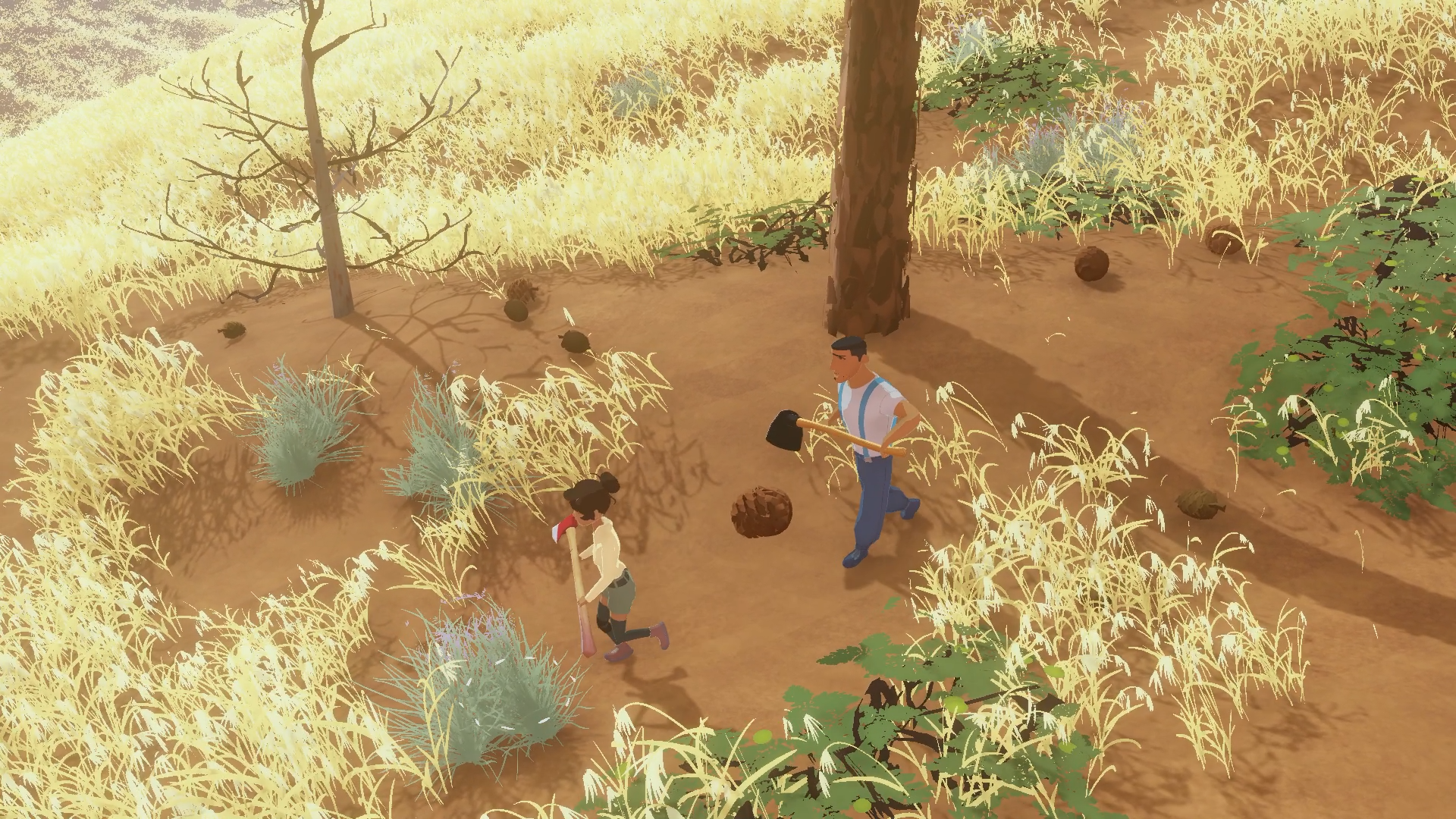
Crew Coordination
Shifting Between Precise Action and Efficient Teamwork
Formation menus felt arbitrary
and broke immersion
First I implemented a menu that organized crew coordination and selection modes into three 'formations.'
The formation categories didn't align with how players conceptualized their work. Players had to break out of the game world to access options that felt arbitrary rather than meaningful.
Players were more concerned with whether they needed precision control or wanted to coordinate their crew on larger tasks.
A simple toggle between Solo
and Together modes
I reworked existing features into a streamlined interface that aligned better with the way players thought about work.
A single button toggle and simplified conceptual model eliminate menu friction—players shift instantly between precision and coordination.
Solo Mode:
Queuing Up Tasks With Precise Control
In Solo mode, each button press assigns the next available crew member to the selected target. If the crew is busy and the player character has the active tool equipped, the player character performs the action themselves.
Sequential assignment enables both precision and efficiency—players make exact selections without getting locked into individual action animations.
Together Mode:
Smart Multi-Selection
In Together mode, rather than queuing individual tasks, one selection triggers coordinated action across multiple related targets.
This enables efficient large-scale work—clearing a stand of trees, planting a row of saplings—without sacrificing the crew coordination that makes teamwork feel meaningful.
Contextual Coordinated Movement
While working together, certain tools automatically trigger coordinated movement modes.
With the brush cutter or watering can equipped, the crew lines up and sweeps areas in formation, working as a coordinated unit.
These behaviors activate contextually based on the active tool, eliminating the need for separate mode switches or manual formation commands.


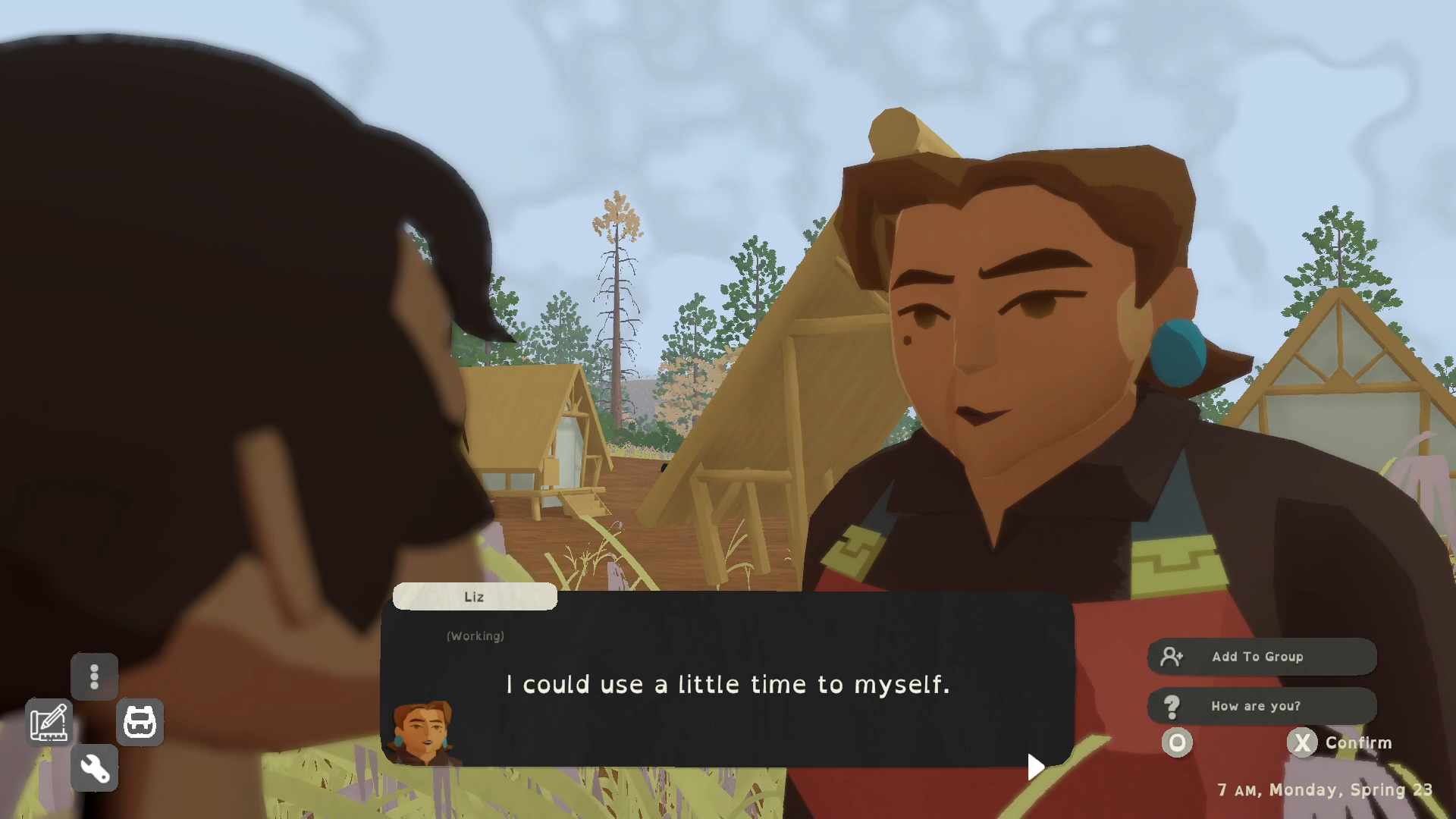
Progression
How Do Players Scale Their Operations?
An early idea for player progression was that players could gradually recruit additional crew members with expertise in different areas.
However, testing revealed diminishing returns beyond about 8 crew members—there are only so many objects and work areas within range of the player, so controlling additional characters doesn’t add as much benefit.
The challenge was to create a progression path which:
Supported themes about leadership and teamwork
Improved the player's operational capacity in meaningful ways
Maintained the feeling of collaborative work and embodied participation
Automated assignments allow strategic multitasking
Assignments let players delegate complex tasks to groups of characters, freeing them up to focus on big-picture strategy.
This provided detailed control while eliminating repetitive micromanagement, but created tension between scaling up and staying connected to the work.
Scheduling with a map interface reduces tedium
A map-based interface lets players schedule recurring work at specific sites as needed.
Players make strategic decisions at a high level—this patch needs watering twice a week—leaving execution to NPCs.
Automation enabled strategic thinking,
but diminished the feeling of direct collaboration
Burnout provides incentives to rest
Characters get burnt out without rest days. A weekly calendar interface lets players manage crew schedules.
Recruiting additional crew allows players to spread work among more people, balancing goals with crew wellbeing.
Working together strengthens relationships
The player character provides buffs to NPCs and builds stronger relationships through direct collaboration, creating meaningful reasons to sometimes join scheduled work.
This approach lets players focus on high-level decisionmaking while making direct participation a meaningful choice rather than a hard requirement.


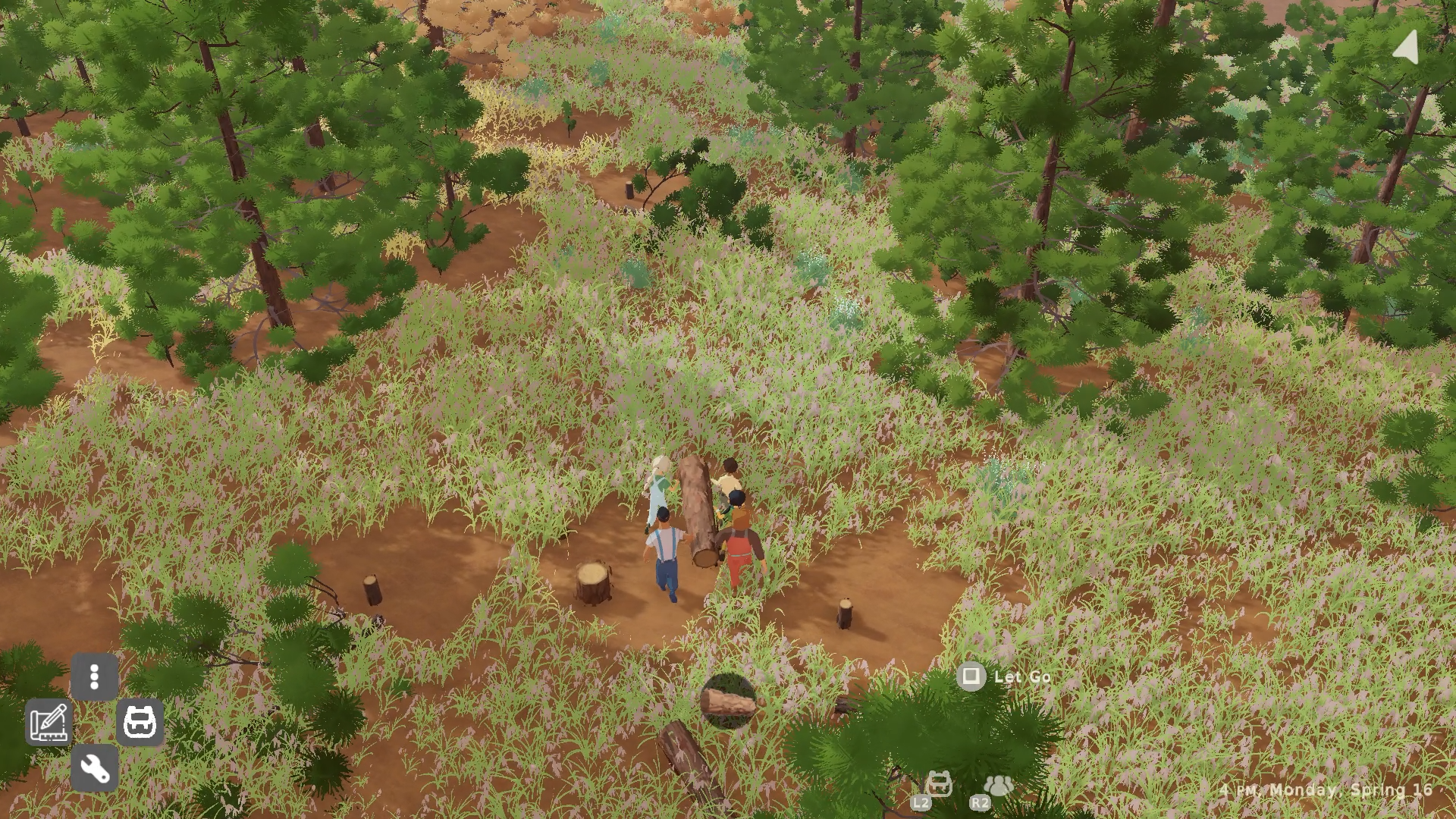
Walkthrough
Building a Trail Section
Working together to build a complex structure
Building a trail section demonstrates how the system handles a complex, multi-day task. The player clears dense forest, processes fallen logs, and plans work—seamlessly shifting between hands-on participation and strategic coordination.
Along the way, players utilize:
Solo mode for precise tree removal
Contextual tool behavior adapting to different targets
Automatic crew coordination for heavy lifting
Planning and automation for building complex structures.
Surveying dense forest crowded with trees and brush
The player needs to clear a path for a new trail through dense forest. Shrubs, trees and fallen logs crowd the intended path - the kind of multi-step task that requires both precision control and collaborative teamwork.
Starting alone, then gathering the crew when the job proves too big
The player starts alone but quickly gathers her crew when the job proves too big. In solo mode, each press of A sends the next available crew member to fell a selected tree, letting her maintain precision while scaling up the work.
Delimbing and processing felled trees into manageable sections
The same axe tool automatically removes branches when targeting the log, then cuts it into smaller sections. The system recognizes the context and provides the right action.
Working together to move heavy
log sections out of the way
Log pieces are too heavy for one person. Multiple crew members automatically coordinate to lift and carry each section together.
The player controls the entire crew’s movements directly, and places the log carefully off to the side of the work area.
Drawing a trail plan and
scheduling tomorrow's work
With the area cleared, she plans the route and assigns tomorrow's work.
Joining the crew as they build
the planned trail
The next morning, she works alongside her crew.
Walking together
on the finished trail
After two in-game days, a major trail section is complete. The player seamlessly shifted between hands-on work and strategic coordination as the situation demanded.
Conclusion
What makes this system work?
The final system transforms crew management from a series of explicit decisions into contextual, fluid interactions.
Where the original prototype required players to think "Ask [Character] to perform [Action] at [Target]" - creating decision fatigue around character selection - the equipment-based system lets players think more naturally: "I need to clear these trees" or "This log needs to be moved."
Cognitive load is reduced significantly. Players spend less mental energy on crew assignment logistics, and instead focus on the work itself.
The instant toggle between solo and coordinated modes eliminates the friction of the old formations menu, letting players adapt to changing situations without breaking their workflow.
Most importantly, the system delivers on the core design goal of leadership that feels collaborative rather than managerial. Players naturally shift between working alongside their crew and providing strategic direction, supporting the game's themes around teamwork and leadership through the mechanics themselves.
